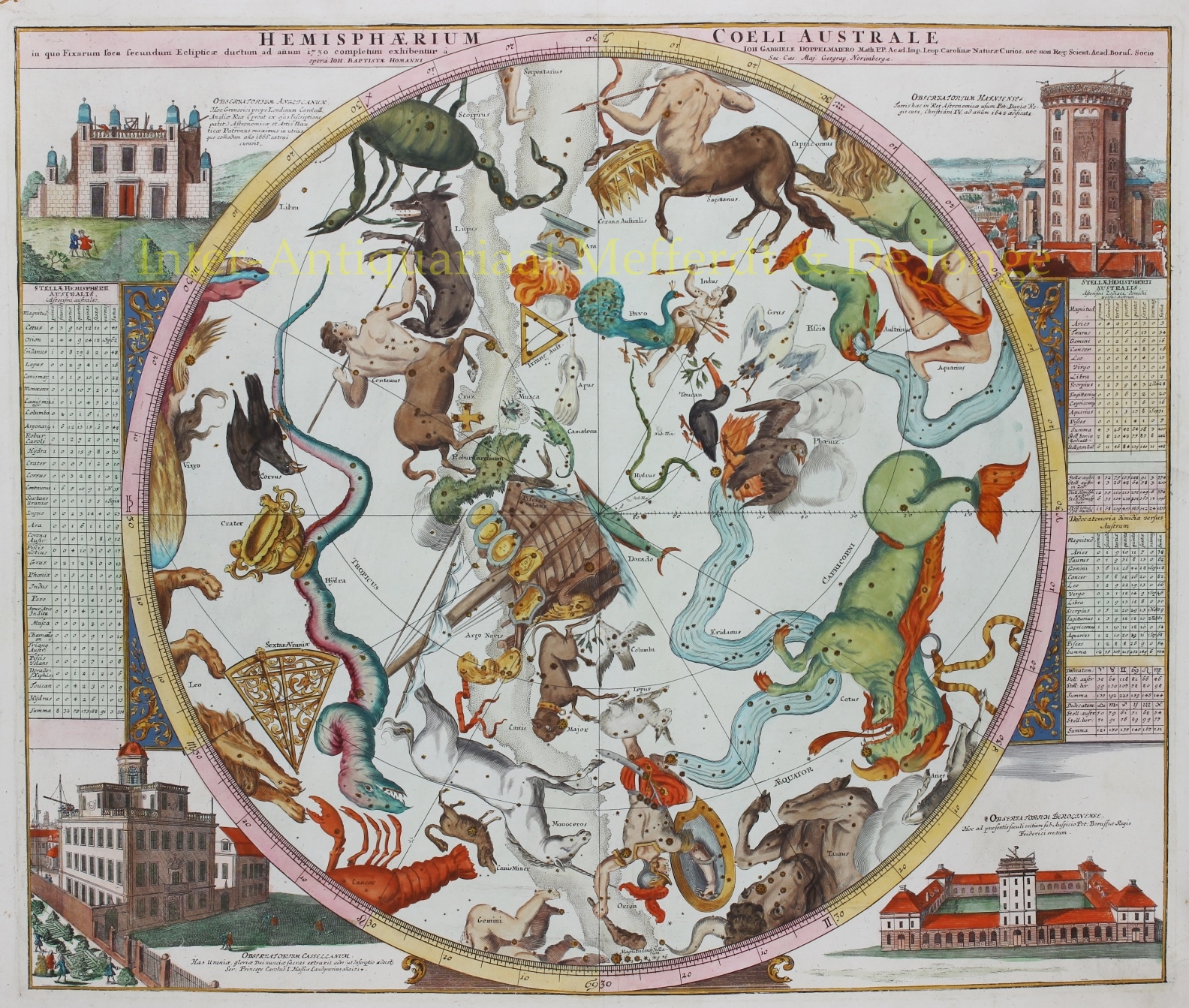CELESTIAL CHART WITH CONSTELLATIONS AND OBSERVATORIES
“Hemisphaerium Coeli Australe,” copper engraving made by Johann Baptist Homann based on the work of Johann Gabriel Doppelmayr, from the “Atlas Coelestis in quo Mundus Spectabilis” (Celestial Atlas with the Observable World) , published in Nuremberg in 1742 or 1748. Coloured by a later hand. Size: 49.1 x 57.2 cm.
This celestial map shows the sky as seen from the southern hemisphere. The constellations – including the Southern Cross and Orion – are depicted according to the observations of astronomer Johannes Hevelius, but we also see more exotic constellations such as Pavo (Peacock in Latin), Tucana (the Toucan), and a beautiful unicorn named Monoceros. The tables on the left and right provide descriptions of the constellations. The borders of the map feature the four most important European observatories in Greenwich, Copenhagen, Kassel, and Berlin. The positions of the stars on the map are accurate for the year 1730.
Johann Gabriel Doppelmayr (1677-1750) was a professor of mathematics in Nuremberg and wrote about astronomy, geography, cartography, trigonometry, sundials, and mathematical instruments. Johann Baptist Homann (1664-1724), a former Dominican monk, was the leading and most productive German cartographer/publisher of the 18th century, producing maps and globes renowned for both their geographical accuracy and distinctive aesthetic appeal.
Price: SOLD


